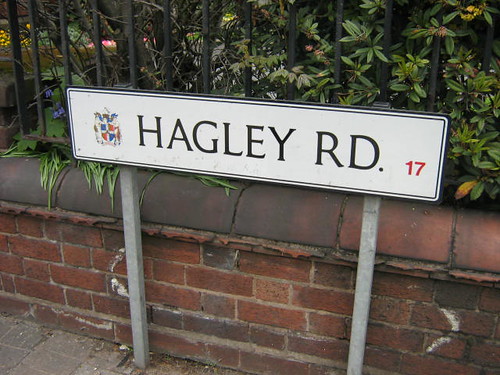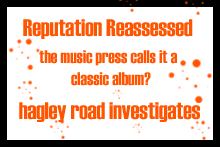 One of the most special places I've ever visited.
One of the most special places I've ever visited.Last month I had the lucky chance to visit the Basque Country for the first time and, as it turned out to be one the most beautiful areas I've ever seen, I thought it may be a good idea to write something about it. Though it's almost impossible to condense such a wonderfully complicated place, I'll try and keep it short and sweet.
First off. Nestled between a circle of incredibly green hills, Bilbao is an architect and urban planner's paradise. People will tell you about the massive changes the city underwent in the last twenty years: from being Spain's industrial capital, Bilbao managed to regenerate itself without losing its unique character. The succession of bridges, structures and new buildings that were added since the 1980s sit fantastically well alongside the city's heritage, which includes the elegant 19th century avenues, alleyways and squares, the picturesque Casco Viejo (old town) and the huge Nervion river.
 Bilbao is also home to some incredible infrastructures. Different areas (and neighbouring towns) are all interlinked through a state-of-the-art network of metro (designed by Sir Norman Foster), trams and overground trains.
Bilbao is also home to some incredible infrastructures. Different areas (and neighbouring towns) are all interlinked through a state-of-the-art network of metro (designed by Sir Norman Foster), trams and overground trains.I often read that the city of Newcastle has a habit of branding itself as "the Bilbao of the North-East" or "England's Bilbao". The expressions 'wishful thinking' and 'punching above one's weight' spring to mind...
When you first arrive, you'll be blown away by the language. Although all signs are bilingual and everyone speaks Spanish (or Castellano, as it's known locally), Euskara is everywhere and it looks and sounds like absolutely nothing else, as it's apparently the oldest out of all the European languages that are still around.
A simple glance at the buildings, old and new, reveals that Bilbao (and the Basque Country as a whole) has little in common with Spain. If you've ever been to Andalusia, Madrid or even Catalunya, they have as much in common with Euskadi as Greece has with England. The succession of Art Nouveau buildings is incredible, but if anything there is more a touch of France and Belgium than there is of the Mediterranean.
 The food is a chapter in itself. Basque cuisine is renowned around the world and their typical pintxos will allow you to sample bits and pieces without feeling guilty in the event you're not keen. A pintxo, in fact, is none other than a cheap miniature dish in the guise of a slice of bread elegantly topped with whichever food available (the variety is always immense) . Each pintxo is a work of art in itself, as the amount of food (sometimes quite elaborate too) balanced on the bread often defies gravity.
The food is a chapter in itself. Basque cuisine is renowned around the world and their typical pintxos will allow you to sample bits and pieces without feeling guilty in the event you're not keen. A pintxo, in fact, is none other than a cheap miniature dish in the guise of a slice of bread elegantly topped with whichever food available (the variety is always immense) . Each pintxo is a work of art in itself, as the amount of food (sometimes quite elaborate too) balanced on the bread often defies gravity.The number of small pintxo bars available is unbelievable. They're literally everywhere, and practically each of them is incredibly pokey, old and picturesque. One gets the impression that the locals are not that much into sit down meals, especially at dinnertime. The amount of people propping up the bar with a pintxo in one hand and a beer or cider (another local speciality) in the other is quite telling.
The downside for the visitor is related to issues of hygiene. If you hail from the Land of Trading Standards, you'll get your heckles up at the sight of a dozen men puffing smoke rings directly into the above mentioned pintxos that are waiting to be dished up from the bar counter.
 It is worth mentioning that, as a whole, Spain is possibly the last EU country immune to any smoking ban and, Bilbao in particular is a smoker's paradise. But fags aside, most pintxos bars will strike you as staggeringly dirty, the floor literally filthy with used up tissues, crumbs, leftovers and fag butts (see photo). And no, floor sweeping is not contemplated until closing time.
It is worth mentioning that, as a whole, Spain is possibly the last EU country immune to any smoking ban and, Bilbao in particular is a smoker's paradise. But fags aside, most pintxos bars will strike you as staggeringly dirty, the floor literally filthy with used up tissues, crumbs, leftovers and fag butts (see photo). And no, floor sweeping is not contemplated until closing time.I guess it's part of the intrigue and, as they say, "when in Rome" and so forth, but you'll have to forget everything you've ever been told about food standards and hygiene rules, otherwise you won't ever try a single local delicacy. And, by the way, I'm still alive and I didn't feel ill afterwards.
Also striking is the separatist issue. Alas, some people have only ever heard of the Basque Country in relation to ETA's bombs and their quest for an independent Euskadi. Although it's quite clear that the majority of Basques do not wish independence, I was blown away by how vocal popular support for ETA is. The old town is literally plastered with pro-ETA posters, banners and graffiti, in a way I guess only certain areas of pro-republican Northern Ireland may compare.
 Whereas I expected ETA to be a totally isolated group of nutters, it is quite clear there's a pool of sympathisers out there and they're quite cocky too. One night, as I was about to doze off in the hotel, I even heard a group of lads in the streets chanting what I could only presume were pro-ETA slogans. To give you an idea of the issue, while I was in Bilbao, one local paper was discussing the local government's motion to fine all shops and businesses that currently display ETA-related iconography.
Whereas I expected ETA to be a totally isolated group of nutters, it is quite clear there's a pool of sympathisers out there and they're quite cocky too. One night, as I was about to doze off in the hotel, I even heard a group of lads in the streets chanting what I could only presume were pro-ETA slogans. To give you an idea of the issue, while I was in Bilbao, one local paper was discussing the local government's motion to fine all shops and businesses that currently display ETA-related iconography.Onto less contentious issues, los bilbainos are very fond of their football team, Athletic Bilbao (simply known as 'El Athleti'). I went on a pilgrimage to their local ground, the San Mamés, one of the oldest in Europe (1913) and affectionately known as La Catedral. The sad news is that it's about to be knocked down and rebuilt next door. Athletic Bilbao rely on Basque players only - absolutely unique in this day and age of multibillion football.
 The city's port is a sight to behold as well. You simply need to catch the metro and get off at Portugalete, a pretty old medieval borough sporting a groundbreaking 19th century transporter bridge suspended from a frame - a gem in Victorian iron architecture. Every five minutes, it ferries pedestrians and cars alike to the other end of the estuary. Absolutely stunning.
The city's port is a sight to behold as well. You simply need to catch the metro and get off at Portugalete, a pretty old medieval borough sporting a groundbreaking 19th century transporter bridge suspended from a frame - a gem in Victorian iron architecture. Every five minutes, it ferries pedestrians and cars alike to the other end of the estuary. Absolutely stunning.Finally, the world famous Guggenheim Museum which some people claim put Bilbao on the map, a bit like Oxford with Inspector Morse. A word of advice. Unless you're really into that kind of thing, DON'T GO. You can admire the excellent external structure from the outside, but think twice before you fork out €13 to gaze at massive empty spaces and the artiest, most pretentious, most useless contemporary crap you'll ever come across in your life. If you do go, expect to read about words like 'decontextualised' a lot.
 These are details, however. Bilbao is simply stunning, with a succession of incredible-looking buildings (which, most amazingly, to the locals are probably quite ordinary!) that are a pleasure to gaze at. If you have extra days available, neighbouring San Sebastian (or Donostia in the local language) is only an hour away. If you go by coach, you'll have a chance to admire the idyllic scenery, a succession of forests and beautiful mountains. Once you're there, you'll gather that San Sebastian is no ordinary place, to the extent that it makes most cities look ugly by comparison.
These are details, however. Bilbao is simply stunning, with a succession of incredible-looking buildings (which, most amazingly, to the locals are probably quite ordinary!) that are a pleasure to gaze at. If you have extra days available, neighbouring San Sebastian (or Donostia in the local language) is only an hour away. If you go by coach, you'll have a chance to admire the idyllic scenery, a succession of forests and beautiful mountains. Once you're there, you'll gather that San Sebastian is no ordinary place, to the extent that it makes most cities look ugly by comparison.As I'm crap at writing conclusions, I will only add that the distinct lack of the so-called "Ibiza crowd" is another definite plus point.



3 comments:
Sounds like an interesting place!
Oh yes, the Spanish and their smoking! Apparently, Britain took the European smoking ban literally, so that everyone had to stop smoking indoors. The Spanish, however, left it up to the proprietors to decide, and being Spain, most of them decided to allow their patrons to smoke.
Which all sounds a bit wild, but they regulate tobacco sales. You can't buy fags in supermarkets or corner shops there, you have to go to a fag shop which is basically run by the government, and the cigarette machines in bars are operated by remote control to stop underage smokers buying from them.
Good point.
Also, come to think of it, it's true: those remote-controlled machines are in each and every bar.
I went there a few years ago, sailing from Portsmouth on the Pride Of Bilbao, a wonderful three day cruise to get there. Trouble was, on our return a week later, we discovered that ETA were back in action and had intended to blow up the ship on the very crossing that we took. Not fackin' impressed!
The city itself is lovely. The old town is amazing, if noisy to stay in. We caught it in the middle of the Cow Parade when the public spaces were filled with hundreds of life-size fibreglass cows gloriously and imaginatively customised by local artists.
Like you, I loved the Guggenheim from the outside. The interior was filled with some dreary Armani exhibition of frocks and suits for the rich. The board of sponsors was an eye-opener as well.
Post a Comment